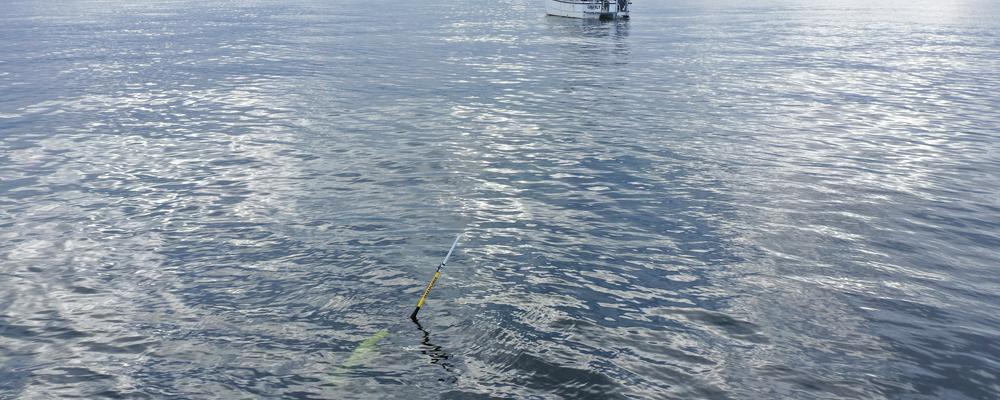Several of Gothenburg University's marine researchers shifted their focus from their ongoing projects when Nord Stream started leaking at the end of September. There are several components to the investigation of the large gas leak. A first expedition was quickly sent to the area with the research vessel Skagerak to take water samples which are now being analyzed by marine chemists and marine biologists. A second project aimed to map the spread of the methane over time.
To do this, three underwater robots, so-called “gliders”, were launched near the leak in collaboration with the research foundation Voice of the Ocean, VOTO. One glider also had a methane sensor from Alseamar that made it possible to map the levels of methane in the water in time and space with high accuracy. The three underwater robots have since been taking measurements non-stop and are continuously sending data to the researchers via satellite. The data show that a significant part of the methane gas that leaked from the pipelines on the bottom of the Baltic Sea did not rise into the atmosphere. Instead, it dissolved in the water and spread with the currents.
Still elevated methane levels
“Thanks to the gliders, we can see where the methane is in the water. Is it in the deep areas, or near the surface, and how is it spreading? During the first two weeks, we saw extremely high levels of methane, almost too high for our sensors to measure and probably up to a hundred times higher than normal. Only now are we seeing a decrease back to normal levels, and even yet, we still sometimes see patches of very high methane”, says Bastien Queste, oceanographer at the University of Gothenburg.
“The expedition to the area gave us a lot of valuable information in the samples that were collected. It is a great snapshot of what was happening during those early days, and it helps us make sense of the glider data. Then, our gliders stay and allow us to follow the development of the methane release over several months”, says Bastien Queste.
In this way, researchers can map the spread and levels of methane for months after the leak. For marine biologist Thomas Dahlgren, the underwater robots' uninterrupted measurements are also very valuable.
“This is fantastic data, otherwise it would have been difficult to know where the methane has gone. That large amounts of methane are dissolved in the water will probably affect marine life. But it remains to find out how”, says Thomas Dahlgren.
There is a risk of eutrophication
In the sea, there are bacteria that break down methane in the water. These bacteria bind up the hydrocarbon and bring it into the food web as the bacteria form food for plankton.
“The water with the methane has spread in the southern Baltic Sea, but it is difficult to explain the rapid decline of methane in the water east of Bornholm in any other way than that the bacteria also took care of it. One hypothesis is that the amount of bacteria increases and that this will contribute to eutrophication, which also promotes the acidification of the sea. That is what happened after a similar leak in the Gulf of Mexico in 2010”, says Thomas Dahlgren.
The hypothesis will eventually be proven or rejected. It takes time to analyze the water samples taken during the expedition, and to see if the methane-eating bacteria have increased, further sampling is needed in the future.
“We need to go there again to be able to determine the impact the methane gas leak has on marine life in the Baltic Sea. That is why we are looking for grants to finance a new expedition in the spring of 2023”, says Thomas Dahlgren.
Contact: Bastien Queste, oceanographer at the Department of Marine Sciences at the University of Gothenburg, phone: 0735-04 28 39, e-mail: bastien.queste@gu.se
Thomas Dahlgren, marine biologist at the Department of Marine Sciences at the University of Gothenburg, phone: 0703-66 20 42, e-mail: thomas.dahlgren@marine.gu.se
